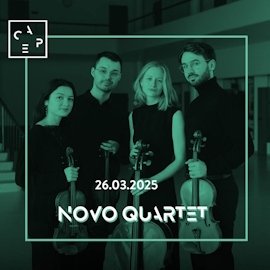 Italienische Musik des frühen 18. Jahrhunderts für Traversflöte: Pietro Giuseppe Gaetano Boni: Sonate II e-Moll; Signor Brivio: Sonate für Traversflöte und Bass D-Dur; Pietro Chaboud: Sonate G-Dur Nr. 5; Arcangelo Corelli: Sonate G-Dur op. 5 Nr. 10; Carlo Tessarini: Sonate G-Dur op. 2 Nr. 4; Roberto Valentini: Sonate V e-Moll op. 12; Enrico Casularo, Flöte, Andrea Coen, Cembalo; 1 CD Da Vinci Classics C00302; Aufnahme 6/2018, Veröffentlichung 08/2020 (59'37) – Rezension von Uwe Krusch
Italienische Musik des frühen 18. Jahrhunderts für Traversflöte: Pietro Giuseppe Gaetano Boni: Sonate II e-Moll; Signor Brivio: Sonate für Traversflöte und Bass D-Dur; Pietro Chaboud: Sonate G-Dur Nr. 5; Arcangelo Corelli: Sonate G-Dur op. 5 Nr. 10; Carlo Tessarini: Sonate G-Dur op. 2 Nr. 4; Roberto Valentini: Sonate V e-Moll op. 12; Enrico Casularo, Flöte, Andrea Coen, Cembalo; 1 CD Da Vinci Classics C00302; Aufnahme 6/2018, Veröffentlichung 08/2020 (59'37) – Rezension von Uwe Krusch
Die Traversflöte hat im 18. Jahrhundert ihren Weg in Italien später als in anderen Teilen Europas gemacht und dann auch zunächst begrenzt auf Rom. Aus dieser frühen Phase spielt Enrico Casularo exemplarische Beispiele, deren Bedeutung er im Beiheft erläutert.
Der ebenso als Dozent, Forscher und Herausgeber aktive Casularo kennt also die Umstände und Entwicklungen der Werke ausgezeichnet und kann daher diese Musik, da er auch mit den technischen Fähigkeiten ausgestattet ist, sachgerecht darbieten. Für die Darstellung der Basslinie zeichnet Andrea Coen am Cembalo verantwortlich. Sowohl einzeln als auch im Zusammenspiel betrachtet lassen sich keine qualitativen Abstriche feststellen, so dass die Kompositionen insoweit in sicheren Händen sind. Was leider nicht so deutlich wird, ist das musikalische Interesse des Flötisten an den Werken.
Seine Darstellungen wirken eher brav und bedachtsam als von Energie und Feuer für die Materie geprägt. Nun mag man einwenden, dass unsere heutige Sicht vieles zu pointiert, schnell und laut darstellen mag. Aber trotzdem will man Lebensfreude und Klangrede hören. Der Cembalist passt sich insoweit mit solidem, aber auch wenig Aufmerksamkeit heischendem Spiel an.
The transverse flute made its way in the 18th century in Italy later than in other parts of Europe and then first in Rome. From this early phase Enrico Casularo now presents some examples, whose significance he explains in the accompanying booklet.
Casularo, who is also active as a lecturer, researcher and editor, thus has an excellent knowledge of the works and, as he has also the technical skills, is therefore able to present this music in an appropriate manner. Andrea Coen on the harpsichord is responsible for the presentation of the bass line. What is unfortunately not so obvious is the flautist’s musical interest in the works. His performances seem rather accurate and thoughtful than marked by energy and fire. Of course, some artists exaggerate in this sense, but nonetheless one wants to hear joy of life and rhetorical music. In this respect, the harpsichordist adapts himself with solid, but also little attention-getting playing.





















